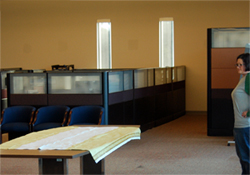






Content
Homepages VS Interior Pages
User's behavior while browsing page content. Ex: Apple's Page
"Gone in 30 seconds" viewers spend very little time on Homepages
User's behavior while browsing page content. Ex: Apple's Page
"Gone in 30 seconds" viewers spend very little time on Homepages
Fonts:
Four Top Guidelines for Type
■ Use common fonts sized at or above 10 points
■ Avoid busy backgrounds
■ Use black text on white backgrounds
■ Keep moving, all-cap, and graphical text to a minimum
Screen sizes:
The Rule of Relative Size Creating pixel-perfect layouts is futile. Define what the default should be but allow people to override your preset.
Maintaining control means relinquishing some of it.
The book recommends setting text size using a relative size scheme (such as percentages or em values) instead of fixed type sizes.
For example, don’t specify that a headline should appear in 14-point type. Say that it should be 140 percent of the size of the body text.
Then if users enlarge the text, the headline will still look bigger than the rest of the text.
A liquid design allows text to be scaled relative to the viewer’s browser settings and screen resolution while still letting designers dictate the structure of the page.

It is vital to take into account the visual impaired viewers of all sources! specially Patched Pirates.
ADA approval it is vital for accreditation.
ADA approval it is vital for accreditation.
CMS successfuly allows data on tables to be read by screen readers in a horizontal order (an issue disputed by our ADA department for the last 3 years)
<<





